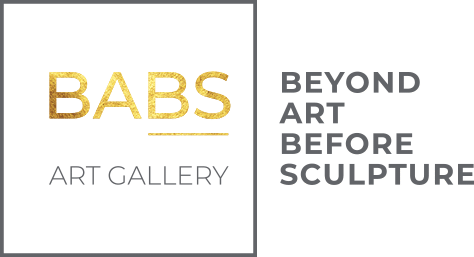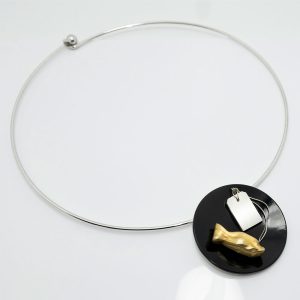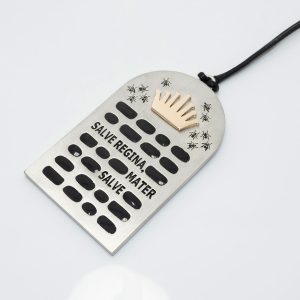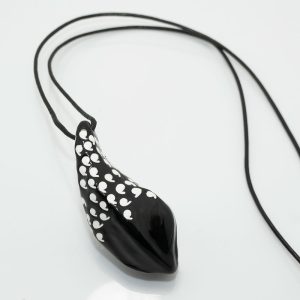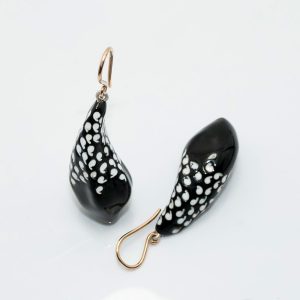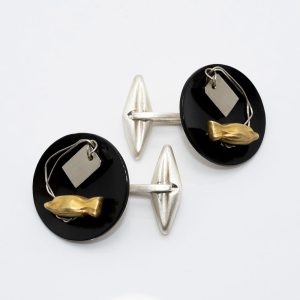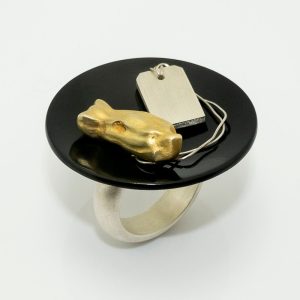EMILIO ISGRÒ
Barcellona Pozzo di Gotto, 1937
An enormous orange seed was created for Expo 2015 because, as the Maestro says, “the orange seed remains, in any case, the most global symbol there is. The purpose is to make small things great, not to diminish great things.” Furthermore, he adds: “I joyfully set about creating the Seed of the Most High for Expo and for Milan: a city overflowing with hope and future in the most difficult situations.”
Never before have Emilio Isgrò’s words been so relevant, and as the artist recently stated, “art helps us overcome the fear of life.”
The jewelry of the Sicilian artist, who adopted Milan as his home, is inspired by his most well-known works. One of the main themes, that of the SEED, is developed in earrings, rings, cufflinks, and pendants, which also reflect the themes of CANCELLATION and COMMAS.
At a difficult time like the present, one of the jewelry pieces is dedicated to supporting the PINKSIE THE WHALE project of the Mercurio Association, which fights the educational emergency by supporting the Italian public school through targeted initiatives to combat exclusion, dispersion, and school dropouts. The association offers help to young people from vulnerable and disadvantaged categories in their school path with models of inspiration, motivation, and social inclusion. In particular, the proceeds from the sale of three hundred pendants will be entirely donated to a support program for young people in Milan and Palermo.
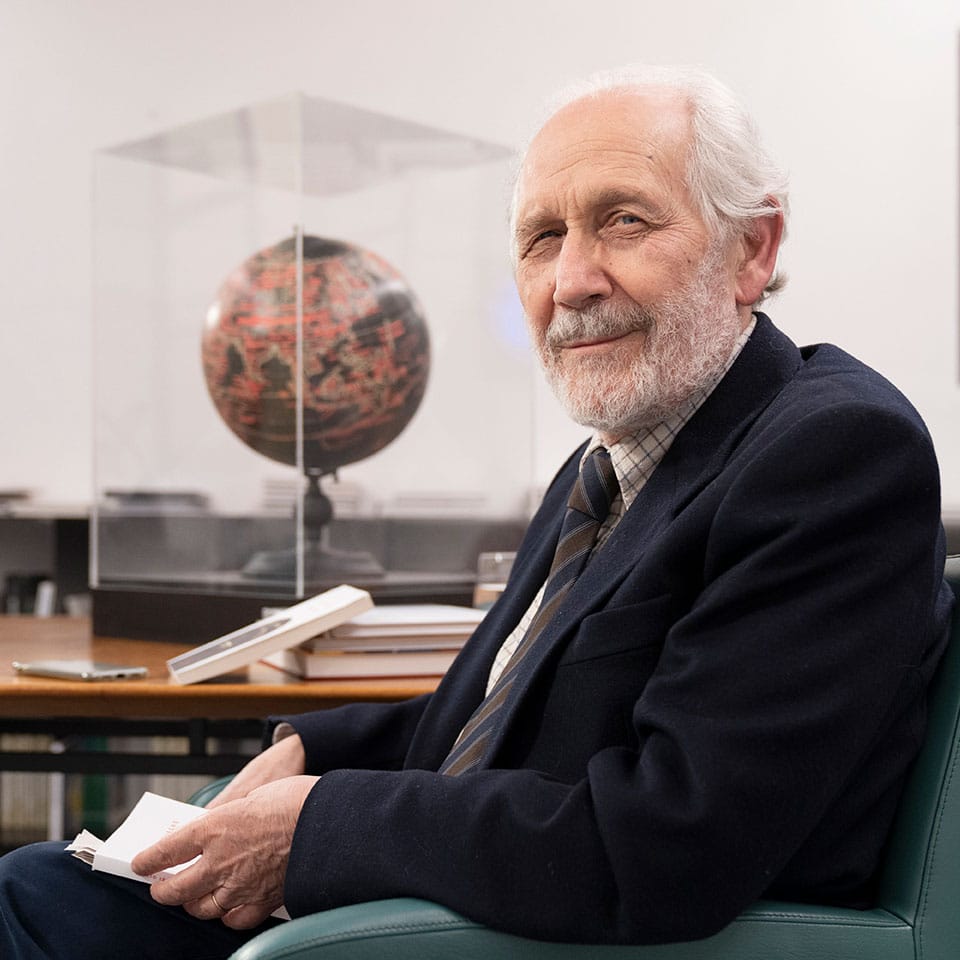
EMILIO ISGRÒ
VIDEO
BIO
Conceptual artist and painter – but also poet, writer, playwright and director – Emilio Isgrò (Barcelona of Sicily, 1937) is one of the most internationally known names of Italian art between the twentieth and twenty-first centuries.
Since the sixties, Isgrò has created a work among the most revolutionary and original, which has earned him several participations at the Venice Biennale (1972, 1978, 1986, 1993) and the first prize at the Biennale di San Paolo (1977). The artist from 1956 to today lives and works in Milan, except for a parenthesis in Venice (1960-1967) as head of the cultural pages of the Gazzettino.
SOLO EXHIBITIONS
Espacio Uno, Museo Nacional Reina Sofía, (Madrid, 2004) Le Fil du Monde alla Fondazione Filatoio Rosso Caraglio, Cuneo (2018), Santa Sangre, Moritzkirche, Augsburg (2015) Los Otros, Ex Chiesa di San Carpoforo/Accademia di Brera, Milano (2015) Dreaming in red, Chateau La Napoule, Cannes, Mundo e Los otros, Gagliardi e Domke, Torino, All fires, The fire. Pasajist, Istanbul, Turkia.
COLLECTING EXHIBITIONS
BienNolo, Ex fabbrica Cova, Milano, Biennale Internationale de L’Art Contemporain, Casablanca, La rivoluzione siamo Noi – Collezionismo Italiano Contemporaneo, a cura di Alberto Fiz, XNL Piacenza Contemporanea; Take me with you, Mori Museum (Tokyo, 2006) I filo raccontato, Museo de Trento y Rovereto (2002) Biennale Internationale de L’Art Contemporain, Casablanca, Andata e Ritorno, El Cairo, Egipto, Kunst/Stoff Tim Museum Texile, Augsburg; La Escuela del Sur, el taller de Torres García y su legado (1991) Archer M. Huntington Gallery (Austin), Museo Monterrey.
